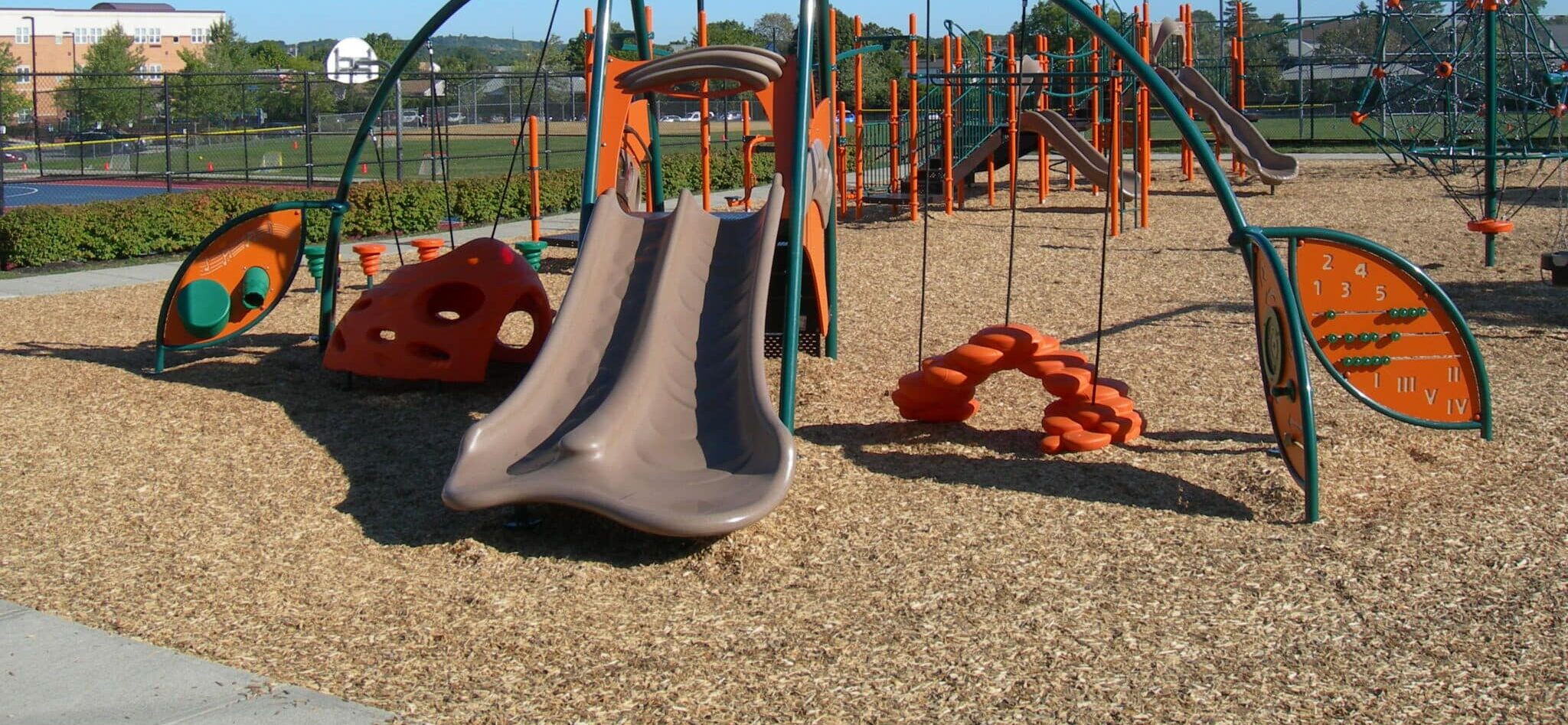The Importance of Maintaining Safety Surfacing
One of the most critical factors in creating a safe play environment is maintaining your safety surfacing. When children run around and exert lots of energy, falling is imminent and should be expected. Harder surfaces such as concrete can make a fall worse than it needs to be, especially a fall off an elevated platform. Implementing and maintaining safety surfacing is the best way a playground director can reduce injuries and the severity of those injuries.
One of the main requirements for safety surfacing is fall protection from 25 feet in the air. While most playgrounds have railings on taller elements, children will still find ways to avoid such precautions. To combat fall injuries from such heights, the surfacing below should have fall protection certified for 25 feet, which is taller than any playground platform should be. Playground directors should consistently check their safety surfacing, especially under tall structures, so they can fix any damages before a serious injury ensues.

Fall height capabilities are not the only concern one should have when inspecting safety surfacing. Damages to one’s surfacing can create small, loose pieces of surfacing that could be a choking hazard for young children. Young children love putting things in their mouths, so if you see a loose piece of surfacing (with the exception of mulch), you should remove it from the area and notify the appropriate playground point person.
Another faulty feature one should look for when inspecting safety surfacing is any holes or rips in their material in poured-in-place rubber or bonded rubber mulch. Deformities like these can be tripping hazards and lead to twisted ankles or even broken bones. One should report any similar defects immediately. Uneven mulch or sand can also be a tripping hazard and is something playground owners should be aware of.
Our partners at No Fault have shared a bunch of best practices on cleaning and maintaining safety surfacing.

Poured-in-place safety surfacing that has been damaged leaving children susceptible to rolled ankles and tripping.

At the end of the day, if something looks like an issue, it probably is and should be treated as such. If you need help maintaining your safety surfacing, we at Pelican Playgrounds can help! Contact Us!






